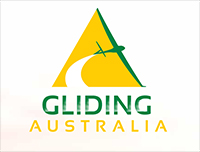pdf Gfa 075an issue 4 Popular
By CTO Tagged in Various 3527 downloads
gfa_075an issue 4.pdf

ALL SAILPLANES, POWERED SAILPLANES AND POWERED ASSISTED SAILPLANES FITTED WITH TO CABLE RELEASE MECHANISMS
1. Weak link strengths and identification standards. 2. Weak link placarding - Sailplanes. 3. Tug placarding - External. 4. Types of acceptable weak links. 5. Types of sailplanes and their certified weak link strengths. 6. Types of Release mechanisms and corresponding tow ring pairs. 1. G.F.A has always required that sailplanes be protected from overloading by means of a weak link in the tow cable. 2. All sailplanes as part of their certification have weak link strengths specified by their designers and are written into their Certified Type Data, making weak links a legal requirement in normal operations. 3. Because the majority of the sailplanes imported into Australia originate from Germany and arrive placarded to European weak link requirements, which are also written into their data sheets and Flight/Maintenance manuals, the European standard for weak links has been adopted as the Australian standard. 4. Part 2 (Ops) of the GFA Manual of Standard Procedures directs weak link useage in normal operations and is to be used in conjunction with this AN. 5. GFA requires that releases in Australia be one of three types, "Ottfur", "Tost", or the standard Blanik nose release. Other releases may be used if they meet all the criteria set out in the GFA Manual of Standard Procedures (MOSP) and have GFA approval. 6. This AN has been prepared to clearly state weak link strength ranges and their identification coding and acceptable types. It also states the criteria for the tow ring pairs that must be used with a compatible release mechanism. This A.N. should therefore act as a ready reference for both inspectors and operators who wish to clarify any aspect of Weak link and Release management.

